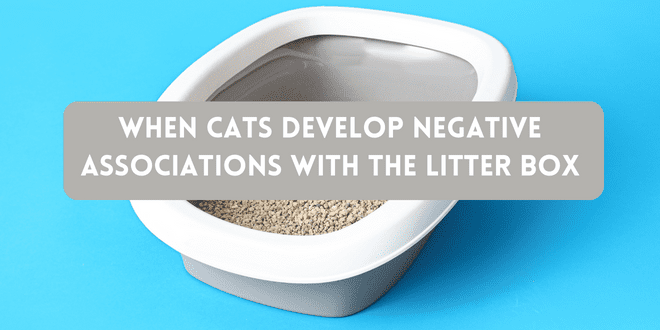
Your cat has faithfully used the litter box for years and then suddenly starts eliminating on the carpet in your bedroom. Sometimes you’ve even found cat pee in the bathroom sink and the tub. What’s up with that?
There are several reasons why a cat may suddenly stop using the litter box such as:
An underlying medical issue
Unappealing litter box conditions
Household dynamics
Your cat must be checked out by the veterinarian at the first sign of a litter box problem in order to rule out any possible underlying medical reason for the behavior. If you didn’t realize that, then it’s time to make an appointment because litter box aversion problems are frequently the result of a medical issue. Even if you’re positive the problem is behavioral, it’s crucial to rule out medical causes first.
If you’ve already seen the veterinarian with your cat and the diagnosis is that kitty does, in fact, have a medical issue such as a urinary tract problem, the veterinarian will prescribe appropriate medication, may or may not recommend a therapeutic formula diet, and you’ll be instructed to bring the cat back to be rechecked.
What if the Cat Still Avoids the Box?
Days go by and your cat, despite the fact that you’ve been diligent about administering the medication, is still peeing in all the wrong places. You’re confused and worry that there may be something else causing it but there really could be a very simple answer: your cat may now have formed a negative association with the litter box due to the pain experienced.
Negative Associations with the Litter Box
What sometimes happens is the cat experiences pain when attempting to eliminate, so he may associate the box itself with that pain. The cat thinks if he eliminates somewhere else it won’t hurt as much. This can happen with urination if the cat experiences burning or pain when attempting to void and it can also happen with defecation if the cat is constipated or if he has something such as IBD, where he experiences intestinal cramping. The cat avoids the litter box because every time he goes there it causes physical pain.
Negative associations can happen for other reasons as well and not just due to a medical condition. If the cat has been ambushed by another pet while in the box or if he has been punished or frightened while near the box he may try to stay as far away from it as possible. It’s not just limited to physical pain and discomfort.
The Solution for Helping Your Cat
The way to handle this is to offer an additional litter box with a different type of litter. You can place the box near, but not right next to, the original box. Often, the fact that the box contains a different litter substrate will encourage the cat to attempt to go in it. Coupled with the fact that the cat is now on medication, so hopefully the pain is subsiding, he may feel more comfortable about using a litter box again.
Don’t just add a different type of litter to the original box because cats don’t like abrupt changes. The way to do it is to offer a choice to your cat and let him make the decision. In some cases, you may need to offer two additional boxes with two different types of litter or you may need to put the additional box a little farther away from the original one. If your cat is consistently eliminating in a particular spot, place the additional litter box in that location. If the original box was covered, put out a second box that’s uncovered. Make the options as convenient and appealing as possible.
The litter box set-up must be convenient, comfortable, and secure. If the negative association is to due to the cat having been frightened or ambushed, address those causes so you can prevent future negative experiences. It’s time to work on intercat relationships. Start by providing adequate resources for each cat. In a multicat household there should be litter boxes spread throughout so one cat doesn’t have to cross another cat’s turf when it’s time to eliminate. Litter boxes should outnumber your cats by at least one.
Look at resource availability in general. Are cats competing at the feeding station or is one cat intimidating another at the window perch? Provide resources in more than one location. The key to feline social peace is resource availability.
If you can’t figure out the reason for the negative association with the litter box, or if the methods you’ve tried aren’t working, talk to your veterinarian about a referral to a veterinary behaviorist or certified cat behavior consultant.
Need More Information?
If your cat is experiencing a litter box aversion problem, have them checked out by the veterinarian. If there is a medical reason for the behavior, keep an eye on your cat to see if there is also now a negative association with the litter box. The sooner you address the problem, the better the chances of success.
For more information on cat behavior and training, refer to the best-selling books by Pam Johnson-Bennett. Pam’s books are available at bookstores and online. We’ve included links to Amazon here on our website.
If you have a question regarding your cat’s health, contact your veterinarian. This article is not intended as a replacement for your cat’s veterinary care and is not dispensing medical advice.
 Problem Solving & Advice by Pam Johnson-Bennett Cat Behavior Expert & Best-selling Author
Problem Solving & Advice by Pam Johnson-Bennett Cat Behavior Expert & Best-selling Author




